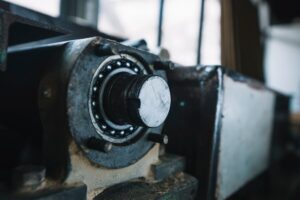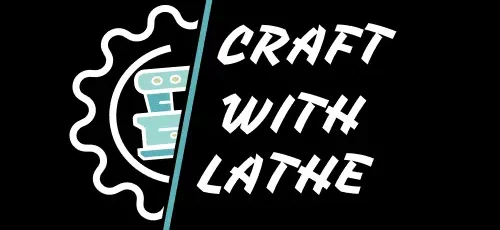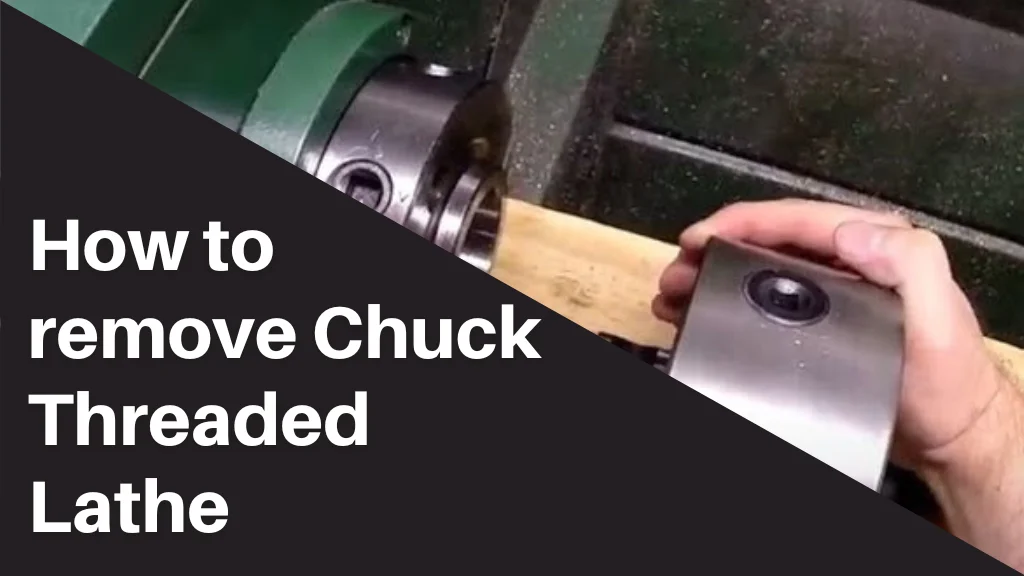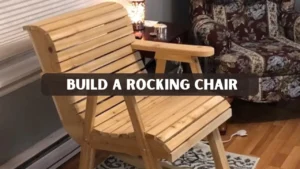We will discuss the different methods of how to remove the threaded lathe chuck. The lathe chuck helps increase the size of the chuck fixed on the material. Proper removal techniques prevent damage to the spindle and chuck threads. Always follow safety precautions and use the correct tools during the removal process.
What is Lathe and Chuck?

A lathe is a type of metal processing machinery, and a chuck is one of the more powerful parts in the process of lathe machinery. Chuck is a fixing tool, which can help us fix the selected parts on the lathe so that the lathe can rotate at a high speed without hovering away. Normally, the automatic loading and unloading machine places parts on the lathe chuck and then uses the spindle bearings and cutter for turning.
Lathe Chuck Overview
Lathe Chuck keys help to increase in size of the chuck fix on the material. Because it is usually adjustable, the lathe chuck can support many different types and sizes of materials. Once you have the material firmly in the chuck, you can switch on the chuck lathe and start cutting, grinding, or drilling to produce an unvarying effect around the material. Some of these devices have different mechanisms to hold your material in place, Like three-jaw lathe chucks and four-jaw chucks. But this all depends on the type of lathe chuck that you are using.
How To Remove Threaded Lathe Chuck Methods

We will introduce the step by step guide of How To Remove threaded Lathe Chuck.
- First, you must keep in mind to need press the emergency stop button to cut off all the electricity of the lathe to make sure that the internal parts of the lathe chuck will not have misfortune when removing the threaded lathe chuck. After this, it is also necessary to pass the carriage, tool rest, tailstock, and other parts of the lathe to the right side of the lathe to keep these parts away from the headstock tool because it can be dangerous for you. Because the lathe chuck is a very heavyweight tool. Once it drops down accidentally during its dismantling.
- Disconnect the lathe chuck assembly from the lathe spindle bearings. Many lathe chucks are joined to the spindle by using six cam locks. Choose the right tool, on all cam locks at a time. To make sure that the pressure on the chuck is released evenly, select a cam lock, release it, and then quickly release the cam lock on the other side of the spindle bearings.
- Completely remove the threaded lathe chuck from the spindle bearings. Disconnect the cam lock to remove the chuck. When you are ready to do it with the other hand, knock on the front end of the lathe chuck with a mallet rubber. So move the lathe chuck away from the spindle and move it in a straight line. Move the chuck away from the spindle bearings and knock it out to be aligned. When the lathe chuck is split from the spindle bearings, place it on the ready surface.
Lathe Chuck Installation Methods
Normally, chucks are installed in the same method, but you must read the instructions given with the lathe machine attached to the equipment. If they are different from the given method then you must need to follow the other instructions! As above discussed the three-jaw chuck is a common and main type of lathe chuck, its installation process will be described briefly.
- The First Method, thoroughly neat and clean the threads inside the spindle bearing and chuck machine. A small number of waste material in the chuck threads will make it very tough to place in the lathe or remove it after that. Then screw up the corresponding place of the three-jaw chuck and the important shaft groove, and screw up the other two jaws of the three-jaw chuck in turn.
- You must be careful not to cross the threads in this step. The lathe chuck should be easily tightened onto the bearings without too much sureness. After this step, three claws are installed in this chuck, which can be interlaced together, and the circular object can be attached to the centre of the lathe chuck.
- The three jaw lathe chuck actively centers workpieces, making it highly suitable for securing them. However, chuck precision and wear over time can affect centering accuracy. Therefore, operators should mark the outer surface requiring high coaxiality during setup whenever possible.
- The maximum permitted weight of the lathe spindle bearings depends on the bearing capacity. If the combined weight of the lathe chuck and workpiece is too large, the bearing may be overburdened. Therefore, it’s important to choose the right chuck type according to the weight of the processed parts of a chuck.
Conclusion
The article introduces How To Remove a Threaded Lathe Chuck in detail. The full text explains that you must release the pressure on the chuck evenly when dismantling the chuck lathe. First, select a cam lock and unlock it. Then, actively loosen the corresponding cam lock attached to the opposite side of the spindle bearings. Choose the other side of the pair and again repeat the same process, then complete the last two cam locks. The installation method of the chuck lathe is the same as the removal process.
FAQ’s
What does a lathe chuck attach to?
The lathe chuck plate or lathe Adapter plate is to be fixed on the lathe spindle bearing. A take-off facing cut across the full face of the adapter must be made. This makes sure that the face is at 90° to the centerline of the lathe spindle bearings.
What is the most accurate chuck on a lathe?
The collet chuck is the best precision chuck and is used for highly accurate work and small tools.
What is the capacity of a chuck?
A drill lathe chuck is a specialized self centering, three-jaw chuck, normally with a capacity of 0.5 in (13 mm) or less, and sometimes greater than 1 in (25 mm), used to hold other rotary or drill bit tools.




